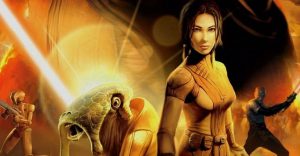Every Pokémon In Legends Arceus’ Pokédex

Pokémon Legends: Arceus may not be a main series Pokémon game, but it does come with its own Pokédex. Based in the ancient Hisui region, Legends: Arceus is comprised mostly of Pokémon who have appeared in previous games. However, many of them come in their Hisuian variants or with additional evolutionary stages, taking on new forms and type combinations never seen in the series before.
In a time long before any of the main series Pokémon games ever took place, Pokémon Legends: Arceus‘s Hisui region is located in the area that would later become the Sinnoh region of Pokémon Brilliant Diamond and Shining Pearl. Because of this, the two games share similar Pokédexes. Legends: Arceus hosts 92 more Pokémon than the Sinnoh Pokédex, though, featuring pocket monsters who joined the series in more recent generations.
Pokémon Legends: Arceus‘s Pokédex is actually different from those of all other Pokémon games. In the mainline series, entries in the Pokédex are completed by catching a single Pokémon in a species. Legends: Arceus – perhaps because it is based in the past and players have worse technology – requires trainers to get 10 points for each Pokémon by battling, catching, or fulfilling challenges. Despite the difficulty this poses, players are still expected to catch them all in Pokémon Legends: Arceus like in previous games.
Pokémon Legends: Arceus’s Diverse Pokédex

Many of the differences between Pokémon Brilliant Diamond and Shining Pearl and Pokémon Legends: Arceus‘s Pokédexes give insight into the ancient world of Pokémon. The pocket monsters that originate from regions outside of Sinnoh are featured in Legend: Arceus in their Hisuian variants or with undiscovered evolution lines. This shows that they may have originally come from the Hisui region before venturing off to other areas in the Pokémon world. Whether this confirms these Pokémon originate from Hisui or not is unclear, but to see what other possible secrets the Hisui region contains, here is Legends: Arceus‘s Pokédex:
- #001 – Rowlet
- #002 – Datrix
- #003 – Hisuian Decidueye
- #004 – Cyndaquil
- #005 – Quilava
- #006 – Hisuian Typhlosion
- #007 – Oshawott
- #008 – Dewott
- #009 – Hisuian Samurott
- #010 -Bidoof
- #011 – Bibarel
- #012 – Starly
- #013 – Staravia
- #014 – Staraptor
- #015 – Shinx
- #016 – Luxio
- #017 – Luxray
- #018 – Wurmple
- #019 – Silcoon
- #020 – Beautifly
- #021 – Cascoon
- #022 – Dustox
- #023 – Ponyta
- #024 – Rapidash
- #025 – Eevee
- #026 – Vaporeon
- #027 – Jolteon
- #028 – Flareon
- #029 – Espeon
- #030 – Umbreon
- #031 – Leafeon
- #032 – Glaceon
- #033 – Sylveon
- #034 – Zubat
- #035 – Golbat
- #036 – Crobat
- #037 – Drifloon
- #038 – Drifblim
- #039 – Kricketot
- #040 – Kricketune
- #041 – Buizel
- #042 – Floatzel
- #043 – Burmy
- #044 – Wormadam
- #045 – Mothim
- #046 – Geodude
- #047 – Graveler
- #048 – Golem
- #049 – Stantler
- #050 – Wyrdeer
- #051 – Munchlax
- #052 – Snorlax
- #053 – Paras
- #054 – Parasect
- #055 – Pichu
- #056 – Pikachu
- #057 – Raichu
- #058 – Abra
- #059 – Kadabra
- #060 – Alakazam
- #061 – Chimchar
- #062 – Monferno
- #063 – Infernape
- #064 – Buneary
- #065 – Lopunny
- #066 – Cherubi
- #067 – Cherrim
- #068 – Psyduck
- #069 – Golduck
- #070 – Combee
- #071 – Vespiquen
- #072 – Scyther
- #073 – Kleavor
- #074 – Scizor
- #075 – Heracross
- #076 – Mime Jr.
- #077 – Mr. Mime
- #078 – Aipom
- #079 – Ambipom
- #080 – Magikarp
- #081 – Gyarados
- #082 – Shelios
- #083 – Gastrodon
- #084 – Hisuian Qwilfish
- #085 – Overqwil
- #086 – Happiny
- #087 – Chansey
- #088 – Blissey
- #089 – Budew
- #090 – Roselia
- #091 – Roserade
- #092 – Carnivine
- #093 – Petilil
- #094 – Liligant
- #095 – Tangela
- #096 – Tangrowth
- #097 – Barboach
- #098 – Whiscash
- #099 – Croagunk
- #100 – Toxicroak
- #101 – Ralts
- #102 – Kirlia
- #103 – Gardevoir
- #104 – Gallade
- #105 – Yanma
- #106 – Yanmega
- #107 – Hippotas
- #108 – Hippowdon
- #109 – Pachirisu
- #110 – Stunky
- #111 – Skuntank
- #112 – Teddiursa
- #113 – Ursaring
- #114 – Ursaluna
- #115 – Goomy
- #116 – Hisuian Sliggoo
- #117 – Hisuian Goodra
- #118 – Onix
- #119 – Steelix
- #120 – Rhyhorn
- #121 – Rhydon
- #122 – Rhyperior
- #123 – Bonsly
- #124 – Sudowoodo
- #125 – Lickitung
- #126 – Licklicky
- #127 – Topegi
- #128 – Togetic
- #129 – Togekiss
- #130 – Turtwig
- #131 – Grotle
- #132 – Torterra
- #133 – Porygon
- #134 – Porygon2
- #135 – Porygon-Z
- #136 – Gastly
- #137 – Haunter
- #138 – Gengar
- #139 – Spiritomb
- #140 – Murkrow
- #141 – Honchkrow
- #142 – Unown
- #143 – Spheal
- #144 – Sealeo
- #145 – Walrein
- #146 – Remoraid
- #147 – Octillery
- #148 – Skorupi
- #149 – Drapion
- #150 – Hisuian Growlithe
- #151 – Hisuian Arcanine
- #152 – Glameow
- #153 – Purugly
- #154 – Machop
- #155 – Machoke
- #156 – Machamp
- #157 – Chatot
- #158 – Duskull
- #159 – Dusclops
- #160 – Dusknoir
- #161 – Piplup
- #162 – Prinplup
- #163 – Empoleon
- #164 – Mantyke
- #165 – Mantine
- #166 – Basculin
- #167 – Basculegion
- #168 – Vulpix
- #169 – Ninetales
- #170 – Tentacool
- #171 – Tentacruel
- #172 – Finneon
- #173 – Lumineon
- #174 – Magby
- #175 – Magmar
- #176 – Magmortar
- #177 – Magnemite
- #178 – Megneton
- #179 – Magnezone
- #180 – Bronzor
- #181 – Bronzong
- #182 – Elekid
- #183 – Electabuzz
- #184 – Electivire
- #185 – Gligar
- #186 – Gliscor
- #187 – Gible
- #188 – Gabite
- #189 – Garchomp
- #190 – Nosepass
- #191 – Probopass
- #192 – Hisuian Voltorb
- #193 – Hisuian Electrode
- #194 – Rotom
- #195 – Chingling
- #196 – Chimecho
- #197 – Misdreavus
- #198 – Mismagius
- #199 – Cleffa
- #200 – Clefairy
- #201 – Clefable
- #202 – Hisuian Sneasel
- #203 – Sneasler
- #204 – Weavile
- #205 – Snorunt
- #206 – Glalie
- #207 – Froslass
- #208 – Carnidos
- #209 – Rampardos
- #210 – Shieldon
- #211 – Bastiodon
- #212 – Swinub
- #213 – Piloswine
- #214 – Mamoswine
- #215 – Bergmite
- #216 – Avalugg
- #217 – Snover
- #218 – Abomasnow
- #219 – Hisuian Zorua
- #220 – Hisuian Zoroark
- #221 – Rufflet
- #222 – Hisuian Braviary
- #223 – Riolua
- #224 – Lucario
- #225 – Uxie
- #226 – Mespirit
- #227 – Azelf
- #228 – Heatran
- #229 – Regigigas
- #230 – Cresselia
- #231 – Tornadus
- #232 – Thundurus
- #233 – Landorus
- #234 – Enamorus
- #235 – Dialga
- #236 – Palkia
- #237 – Giratina
- #238 – Arceus
- #239 – Phione
- #240 – Manaphy
- #241 – Shaymin
- #242 – Darkrai
In all, the Hisuian Pokédex hosts 242 Pokémon from the first 7 generations of the mainline series, meaning Pokémon Legends: Arceus will be long to beat for completionists. None of the original pocket monsters from Pokémon Sword and Shield made it into the game, nor did any of the Galarian regional variants. Very few Pokémon from Alola made it into the game as well, with the only pocket monsters from Pokémon Sun and Moon in Hisui being those in the Decidueye line. This does not detract from Legends: Arceus‘s diversity, though, as the game still enables players to catch around 100 more Pokémon than most main series games before the acquisition of the National Dex.
Pokémon Legends: Arceus’s Regional Variants & New Pokémon

Pokémon Legends: Arceus‘s Pokédex shows that Hisui has 14 of its own regional variants. The Pokémon with Hisuian variants in Legends: Arceus include Decidueye, Typhlosion, Samurott, Qwilfish, Sliggoo, Goodra, Growlithe, Arcanine, Voltorb, Electrode, Sneasel, Avalugg, Zorua, Zoroark, and Braviary. Notably, all of these pocket monsters were introduced to the Pokémon series in generations other than Gen 4, suggesting their Hisuian forms may be their original forms that either went extinct or migrated and evolved elsewhere. Most notable of these is the Voltorb line: Their wooden appearance better matches the Poké Balls seen in Pokémon Legends: Arceus, but in other games, their appearance matches modern Poké Balls.
Technically, Pokémon Legends: Arceus could have more Hisuian variants when considering that some species received new evolutions. In some cases, these new evolutions add an alternative evolutionary path, such as Legends: Arceus’ Noble Pokémon Kleavor in the Scyther and Scizor line, and Sneasler in the Sneasel line. However, in most cases, the Legends: Arceus evolutions add new stages to one or two-stage evolution lines. These new evolutions are Wyrdeer, Ursaluna, and Overqwil. Fans have been wanting the Stantler and Qwilfish species to receive more attention for a long time, so these additional evolutions are a welcome update to the series. How or if future main series games choose to incorporate these new Pokémon from the ancient Hisui region remains to be seen, however.
Other than the new evolutions and Hisuian variants, Pokémon Legends: Arceus has only one new Pokémon: Enamorus. As one of the 18 mythical and legendary Pokémon in Pokémon Legends: Arceus, Enamorus is joining the Forces of Nature Legendary Trio in Pokémon Legends: Arceus as the representation of love. Like her counterparts, she has both an Incarnate Forme and Therian Forme, with the latter seeing her take on the shape of a tortoise.
For a non-main series game, Pokémon Legends: Arceus offers a Pokédex with plenty of new twists and old Pokémon to enjoy. Even if these newer pocket monsters are variants or new evolutions of older species, this is fitting for the Hisui region. After all, the Sinnoh region itself offered few original Pokémon with the release of Gen 4 and instead brought new evolutionary stages to several Pokémon evolutionary lines, so it makes sense that Pokémon Legends: Arceus has done the same.

















